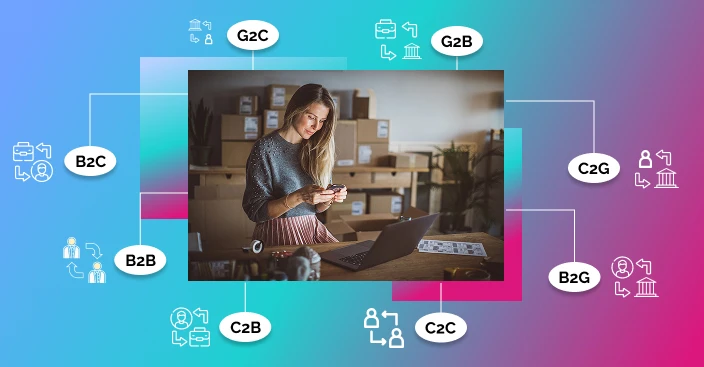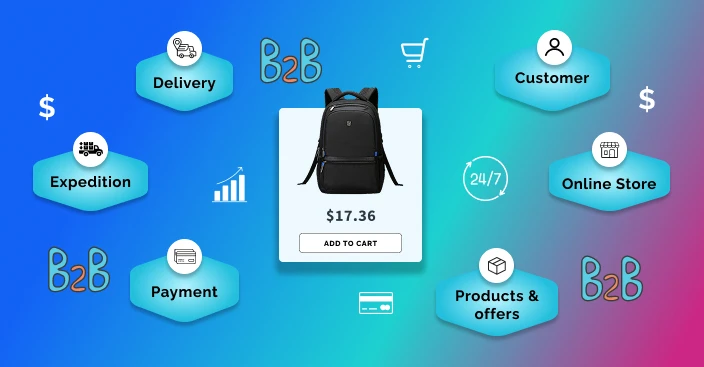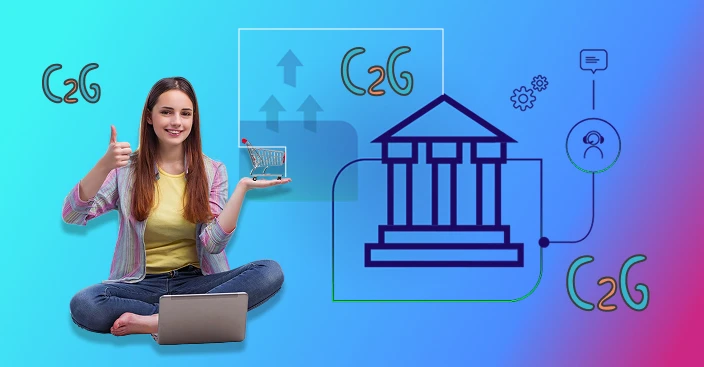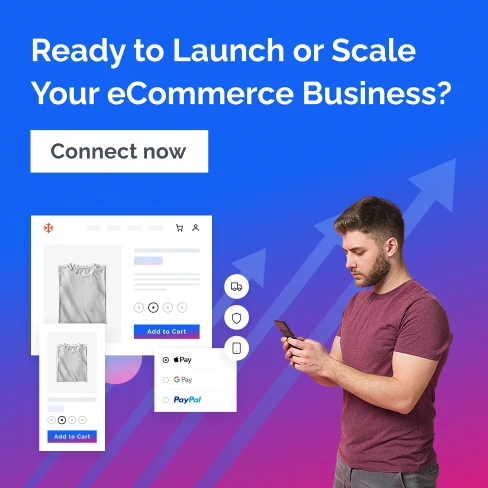Top Eight eCommerce Business Models in 2025 With Pros and Cons

A couple of years ago, there were only a few e-commerce businesses with a small pool of consumers still struggling to understand the benefits of buying things online rather than in-store.
Fast forward to our time, there are millions of eCommerce businesses representing different models and serving a global audience.
Now, people would rather shop all day on their smartphones and track their orders easily, instead of driving several miles to get to a brick-and-mortar shop with limited product inventory.
Even the latest eCommerce websites allow visitors to either shop or browse through their gallery of different products in several niches, ranging from electronics, home decor, wearables, books, and just anything you could think of.
Did eCommerce improve, or did people begin to understand its usefulness?
The answer to both sides of the question would be YES.
eCommerce has evolved through the years with improved payment options, automatic order processing, faster shipping, more developed UIs, and different innovative models, as we’ll learn shortly. With these different types of eCommerce business models coming into play, there are different classifications of eCommerce as well.
These significant improvements are the reasons why people started to understand the usefulness of eCommerce and embraced it to the current levels.
However, given the millions of e-commerce businesses in existence, there could be confusion about what form of practice to classify as an e-commerce business model.
The confusion could even become a significant challenge for individuals or organizations who want to join the eCommerce industry.
In this article, we explore the various types of eCommerce business models and then discuss the pros and cons of operating an e-commerce venture using each of them.
Before we get to that, let’s define what a business model is.
A business model refers to a plan for the successful operation of a business and how it relates to existing products or services in the industry. It also encompasses the revenue sources as well as the potential customer base.

Considering that now you have an understanding of what a business model is, we can move on to the different business models in eCommerce. Now that we got that let’s get to the core business models of the eCommerce industry.
Types of eCommerce Business Models
There are primarily six eCommerce business models :
- Business-to-Business (B2B)
- Business-to-Consumer (B2C)
- Consumer-to-Business (C2B)
- Consumer-to-Consumer (C2C)
- Business-to-Government (B2G)
- Consumer-to-Government (C2G)
- Government-to-Business (G2B)
- Government-to-Citizen (G2C)
1) Business-to-Business (B2B)
As the name suggests, the business-to-business model of eCommerce is one where the exchange of goods or services takes place between corporations instead of individuals. As of 2025, the global B2B eCommerce market is valued at $32.11 trillion, up from ~$17.8 trillion in 2021, with a CAGR of ~14.5%, projected to reach $36.16 trillion in 2026. It is usually a situation whereby one company provides goods or services online to other companies as its target audience.
B2B Examples
- When a mobile app development company offers its IT solutions to real estate companies seeking to build an app for their client base, the company advertises its service on its website. Real estate companies interested in the service can request a price quotation through the same channel.
- A cybersecurity firm is offering its online security software that mitigates credit card fraud to an eCommerce company.
Bear in mind that the firms dominating the B2B eCommerce model are mainly service providers. In a few cases, though, you will also see B2B in action when firms have to buy certain products from their counterparts.
Data firm, Forrester, estimates that B2B eCommerce will hit the $1.8 trillion mark by 2023. Therefore, there is a chance that you could scoop a fair share of the revenue if you do further studies and develop a B2B e-commerce store that sales hot products and services in the industry.
Pros
- Predictable high-volume clients, recurring revenue
- Strong customer loyalty and long-term contracts
- Lower per-unit costs due to scale and automation
- B2B features lower operating costs after the initial setup, as most processes are automated and remain valid for an extended period.
- You can generate a sustainable and reasonably high-profit margin from repeat clients.
Cons
- B2B eCommerce often requires substantial capital to set up. Costs include business registration, branding, and setting up a physical or virtual office.
- There is a smaller pool of customers when compared to other models.
- Since B2B marketing targets businesses, sales are a little hard to come by because firms take a longer time to make decisions.
- High initial setup and integration costs
- Longer sales cycles and negotiation times
- Price sensitivity on bulk orders
2) Business-To-Consumer (B2C)
The B2C eCommerce business model is what usually comes to people’s minds when they hear the word “e-commerce.” It is perhaps this popularity that is also responsible for the increased activity in this field.
B2C eCommerce refers to the distribution of goods and services from a business to members of the public who are its customers. It is one of the earliest forms of eCommerce and has grown massively in the last two decades, as observed from retail giants Amazon.
According to Statista, retail e-commerce sales globally stood at $6.3 trillion in 2024, expected to reach $6.9 trillion by the end of 2025 (≈approximately 21% of total retail) and grow to $8 trillion by 2027. Major D2C brands now constitute ~15% of Indian e-commerce, up from around 2% five years ago, with a projected 40% CAGR in India.
B2C Examples
- All major online retail stores, such as Amazon, and payment processors like PayPal.
- A traveling agency that provides tickets and travel insurance policies to clients.
- A digital education website, such as CodeAcadem, that lets users learn basic computer programming for free.
Pros
- Low entry barriers and scalable operations
- Strong brand control and marketing flexibility
- Opportunity for impulse and personalized shopping
- It requires a relatively low startup capital compared to other e-commerce models. For instance, drop shipping allows selling products without you having to manage an inventory or delivery.
- Anyone with a basic understanding of the internet can set up and manage a B2C e-commerce store with minimal supervision.
- It is also easy to scale a B2C eCommerce venture.
- It involves selling to a wide range of audiences with already known purchase patterns and behavior.
- It allows for flexibility, as the platform serves as the channel for efficiently collating market demand in real-time.
Cons
- The B2C space is highly competitive with most firms already boasting a majority of the market share.
- Shipping products across borders can be a significant challenge if you select the wrong shipping company.
- Many buyers still prefer making purchases in-store rather than online.
- There is little difficulty in sourcing for hot and cheap products to list on your eCommerce store throughout the year.
- The market is continually evolving and requires more frequent upgrades than other models.
- Low entry barriers and scalable operations
- Strong brand control and marketing flexibility
- Opportunity for impulse and personalized shopping

3) Consumer-to-Business (C2B)
The C2B eCommerce model is the opposite of B2C, meaning that in this case, consumers are now the ones offering goods and services to business operators.
Interestingly, the C2B industry is arguably the most significant employment channel other than paid office jobs, because the transactions are borderless. In 2024, over half of transactions in emerging economies still rely on cash-based or local non-credit methods (≈60%), crucial for C2B models targeting global talent and local businesses.
We divide C2B eCommerce owners into two categories:
Independent workers — This set of people offers products or services on a website they created for this purpose. The approach enables them to interact directly with clients and negotiate deals on their own terms.
Freelancers — The Majority of C2B eCommerce owners under this channel are service providers and product sellers on freelancing sites such as Fiverr and Upwork.
Businesses visit these platforms to search for skilled service providers who display their services and end up hiring anyone who matches their needs. The platform, in turn, charges commissions for connecting businesses with these service providers.
Examples of C2B
- A sports blogger who bills a gaming company to promote their services on his blog or signs up for Google AdSense to display ads that suit his audience in exchange for profits.
- Social media managers, content creators, brand managers, programmers, and many other service providers are working online.
- A photographer selling his images on websites such as Fotolia or 123RF.
- Social media users are filling in surveys.
The C2B industry also has a different revenue model from B2C because service providers and their clients can define parameters such as how often to collect payment, duration of a project, product supply dates, and more.
In a nutshell, service providers can earn as much as they can work, with a rare opportunity to apply for several job openings at once.
Pros
- Borderless freelancing economy and flexibility
- Companies access global talent at variable rates
- Creators can negotiate terms directly
- It also provides an opportunity for companies to prioritize hiring from regions where the standard of living is low, thus reducing the cost of the paycheck.
- It also allows service providers to gain work experience across multiple projects and receive compensation for doing so.
- Freelancers also enjoy relative freedom and flexibility in terms of working hours.
Cons
- Requires strong communication and delivery quality
- Payment challenges across regions and trust verification
- Quality and consistency may vary
- The possibility of outsourcing means the freelancer paid for the job may not even be the one doing it. This situation could put the
- The employer is at a disadvantage as he receives substandard service for what he originally paid.
4) Consumer-to-Consumer (C2C)
Under the C2C (Consumer-to-Consumer) eCommerce business model, consumers typically sell to other consumers through a third-party website or an independent online platform they have created for this purpose. Moreover, the global C2C eCommerce market was $3.106 trillion in 2025, growing from ~$2.49 trillion in 2024 (≈24.7% CAGR) and expected to reach ~$7.44 trillion by 2029
Generally, all peer-to-peer transactions of goods and services carried out online fall into the C2C e-commerce business model. It requires a high level of trust between the customers and not necessarily on the platform on which the trade is carried out.
C2C Examples
- The foremost example of C2C via a third-party website would be an auction platform like eBay, which brings sellers and buyers together. eBay charges a fee for facilitating each sale while the other parties to the transaction are responsible for settling other matters such as product quality, packaging, shipping, and refunds.
- Cryptocurrency exchanges that offer over-the-counter trades to users. Under such circumstances, the exchange charges a fee for the transaction while it allows the users to transact cryptocurrencies with one another.
- It is essential to note that most businesses operate both the B2C and C2C models simultaneously, even though they may initially start with one. In most cases, however, the B2C comes first, followed shortly by the C2C as an extension and additional revenue source.
- If you plan to pursue this path, you may need to conduct more extensive research to determine the prevalent buyer behavior in the market before deciding which model to employ first.
Pros
- Minimal upfront listing costs
- Vast and constantly refreshed product inventory
- Sustainable and second-hand markets thrive
- With C2C, the product gallery is unlimited since different customers are on board and selling various items scattered across different niches.
- C2C often serves as a black market for businesses to purchase items without going through the primary market.
- Any online platform that allows interaction between two or more people can facilitate a C2C trade.

Cons
- Quality control and trust issues
- Transaction fees can reduce seller margins
- Risk of inflated pricing in auctions
- The cost charged for each sale using the C2C eCommerce model on a third-party site, such as eBay, may eat into the merchant’s profit.
- C2C poses a higher level of risk in terms of product quality than other eCommerce business models. Under C2C, most transactions require that both parties trust it each other.
- For auction sites, users may end up buying goods at inflated prices which is not a good economic decision.
5) Business-to-Government (B2G)
As the name rightly suggests, the B2G eCommerce model is one where a business sells its product or service to the government of either the area where its operations are based or elsewhere.
In most cases, businesses under this umbrella have these government or public administrative offices as their only clients and receive contracts on a long-term basis. Such a situation enables them to easily calculate profits and manage funds effectively while delivering their solution to a wide audience. Though still niche, B2G contracts tend to be large and long-term. Governments globally are increasing their eProcurement, tendering, and public‑service digitization efforts
Sadly, though, their business could also be negatively affected if there is a change in government and the new authority refuses to honor the already existing contract.
Consider this scenario:
A sitting government contracts an online marketing agency or influencer to manage its political campaign by broadcasting promotional material to the masses across social media and other digital channels.
If by any chance, the ruling government fails to win at the election, the new authority may likely opt for another online marketing agency or influencer to do the job previously held by a different entity.
In this situation, one B2G firm gains while the other loses out.
Other Examples of B2G,
- A government using a virtual workspace software designed by a creative agency.
- The situation in Ohio where the State’s tax department hired the service of a third-party to collect and convert tax payments in cryptocurrencies to fiat.
Pros
- High stability, long contract durations, tax or legal benefits
- Large-scale revenue potential
- It features a higher profit margin and longevity than most other eCommerce business models.
- B2G businesses can enjoy tax benefits not typically available to other e-commerce merchants.
- It increases flexibility and efficiency in public administration.
Cons
- A change in government could adversely affect a B2G product or service provider
- It often requires huge capital to set up.
- Bureaucratic processes and compliance burdens
- Risk of policy change or loss of government contracts
- It could also confine a business to operate within a specific geographical location, thus removing the primary purpose of eCommerce transactions which is borderless product and service delivery.
6) Consumer-to-Government (C2G)
C2G is just the opposite of the last eCommerce business model albeit a little different; this time it is the consumers or members of the public that offer value to the government or public administrative agencies.
However, Governments worldwide continue to digitize services, but adoption depends on infrastructure and public awareness; they still face access limitations in underserved areas
The public does not bear any responsibility whatsoever if the platform conducting the C2G transactions goes offline or fails to deliver.
Examples of C2G
- A State’s tax agency decides to ditch paper tax filing and instead introduce an electronic tax filing portal.
- A State is creating an information-sharing platform to allow citizens to get the latest information, possibly because of a suspected natural disaster.
- An electronic voting app for citizens to participate in an election without having to visit the polling unit or file paperwork.
- Other forms of transactions between citizens and the government are either facilitated by the government directly or via a third party.
Note that the government could decide to terminate C2G transactions if it doesn’t realize its purpose of creating such a platform or wants to try a new approach.
Pros
- Enhances public convenience and reduces manual workloads
- Improves transparency and accessibility.
- It makes public administration more flexible and efficient.
- It encourages public knowledge of internet-based technology.
- There is enormous profit potential for third parties contracted to handle C2G transactions.
Cons
- A lack of internet service in some regions could restrict the performance of C2G eCommerce.
- Infrastructure gaps limit reach
- Requires citizen education and digital literacy programs
- Public awareness and education programs may be needed to introduce the populace to such systems.
7) Government-to-Business (G2B)
In this eCommerce model, the Government, also called the Administration, makes its services available to businesses and corporations. There is an exchange of services on an online portal through which businesses can find and avail of services. This exchange of services is mainly non-commercial. As governments digitalize services like e-tenders and licensing portals, G2B becomes more common, although it remains slower-moving due to regulatory and verification needs.
Typically, these websites operate in the scope of auctions, application submissions, social security, fiscal measures, and tenders.
A high level of trust and accountability is required from both parties, as these services often directly affect the general public. Every transaction requires proper background checks, and the eCommerce platform, in general, is very secure because of the nature of transactions.
Examples of G2B
- Developed by the Government Logistics Department, the e-Tender Box (ETB) system is an example of a G2B eCommerce platform. Interested parties can use this platform to avail of the GTB’s services.
- There are e-Procurement Programmes that enable different suppliers from within the government and outside the government to come together and collaborate so that they can agree on providing the required services at a decided price
- Businesses can avail of guidance and financial help in the form of funding and loans through G2B platforms.
Pros
- Lower costs and barriers for interaction between governments and businesses
- Reduced time for carrying out a transaction
- Easier access to information
- Convenient navigation through government regulations
Cons
- Inequality as not everyone has access to the internet
- Businesses are required to provide a lot of information to the government, which may hamper their privacy
8) Government-to-Citizen (G2C)
The G2C eCommerce model is the opposite of the C2G eCommerce model that we just mentioned above. The government creates these websites to make it easier for citizens to gain access to its services.

The primary aim of this model is to reduce the cost of making information public. There is a minimal cost attached to this process, and the access to the services also increases. Also, the effort from the citizens’ side also decreases because they do not have to go to the government offices time and again.
Examples of G2C
- Government-to-Citizen portals enable citizens to pay their taxes online
- Registration for birth, marriage, or death certificates can also be easily done online using the G2C portals
- Passport and Driver’s Licence registration can also be done very conveniently through online portals
Pros
- Cheaper access to the government’s amenities
- The convenience of carrying out transactions without having to travel to the physical offices
- The information is made easily available to everyone
- Encourages citizens to use technology
- Governance is more efficient and faster
Cons
- The lack of proper infrastructure can make accessing the G2C portals difficult.
- The general population needs to be made aware of these services so that they can make use of them.
Now, let’s discuss the general advantages of running an eCommerce venture as opposed to sticking with brick-and-mortar stores in physical locations.
Final Words
If you’re planning to join the e-commerce industry, then the insight you’ve gotten from this article will likely be crucial as you choose a path to follow. Now, you can accurately weigh the opportunities and deficiencies associated with each eCommerce business model before you even write your business plan. You’ll face challenges when starting your e-commerce business, so ensure you are well-prepared with the necessary skills and knowledge. For additional information, refer to this guide.
You could also easily tell which model to start up with or even which ones are compatible with your business ambitions. That perfectly sets you up for the journey ahead and increases your chances of getting to the top of the pile real quick!
FAQs
 What are the leading eCommerce business models for 2025?
What are the leading eCommerce business models for 2025?
The eight most common models are B2B, B2C, C2C, C2B, D2C, subscription-based, dropshipping, and wholesale. Depending on your objectives, each has its own set of benefits and obstacles.
 Which eCommerce model has the greatest profit potential?
Which eCommerce model has the greatest profit potential?
Profitability is dependent on your specialisation, target market, and operational efficiency.
 What is the difference between B2B and B2C in eCommerce?
What is the difference between B2B and B2C in eCommerce?
B2B sells to businesses, and B2C sells directly to consumers.
 Is dropshipping still an effective business concept in 2025?
Is dropshipping still an effective business concept in 2025?
However, due to heavy competition, profit margins may be smaller than in other models.
 How do I select the appropriate eCommerce business model?
How do I select the appropriate eCommerce business model?
Consider your products, audience, budget, and long-term growth objectives.


